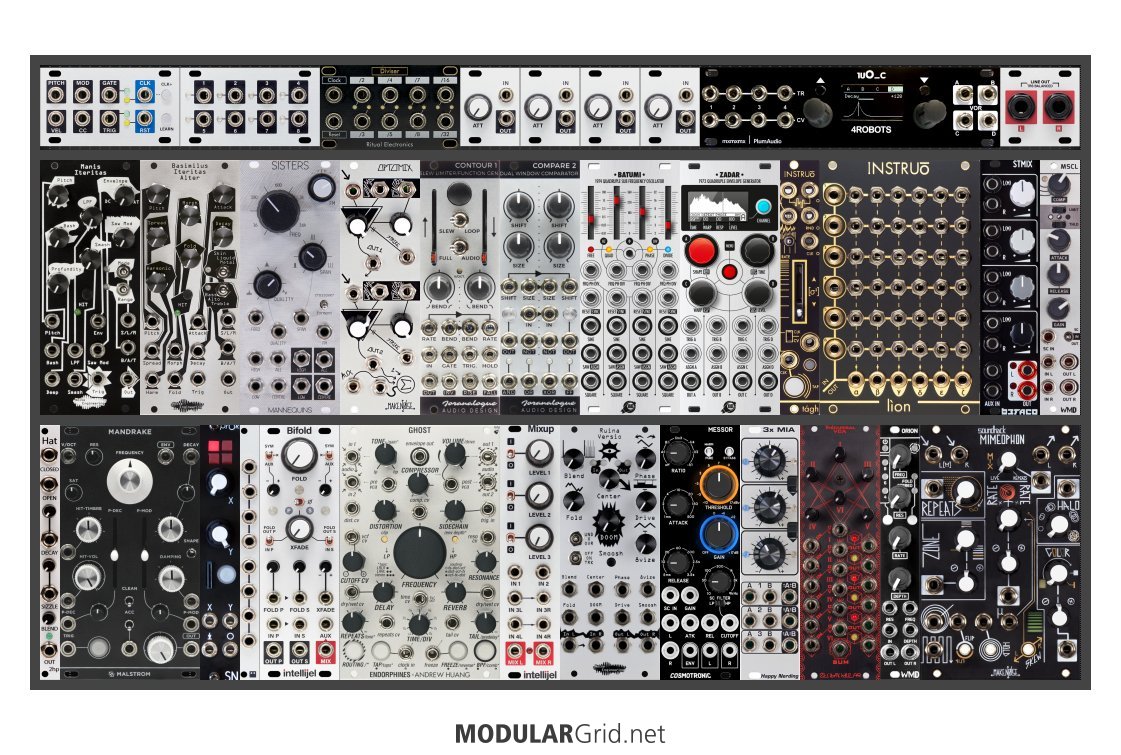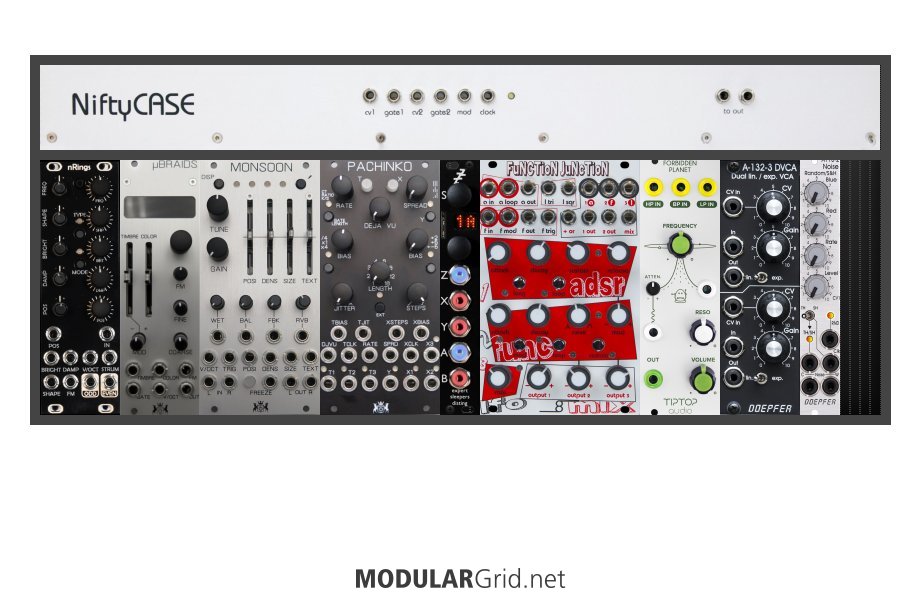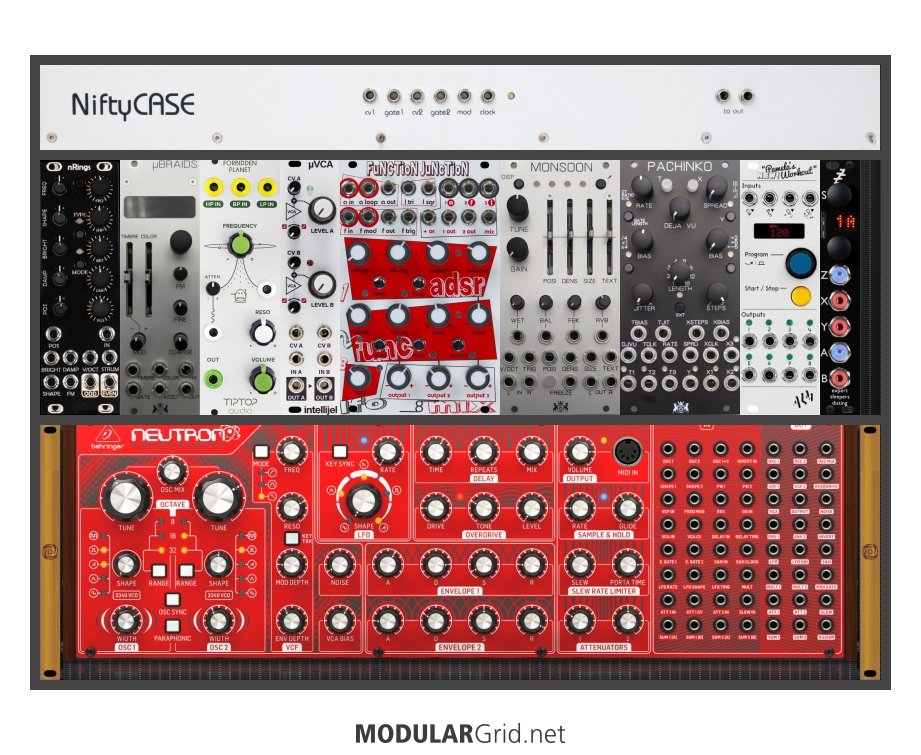great link there @Sweelinck!
Hi all, after spending the past few years admiring modular from distance, I feel like its time to take the plunge with my own. Before I pull the trigger on a few modules to start myself off (already have the case, the intellijel one) I'd like some advice please if this is a sensible rack set up and if I need to add more modules to eke out the most functionality from a small space?
what does your extensive reaseach tell you? - especially relating to newbie racks and particularly drum oriented modular...
general advice is don't do drums in modular... it's very expensive and way more complicated than an external drum machine!
& how are you intending to sequence the drums? if just midi (using the planned midi->cv module) and the clock divider they'll potentially be very boring!
Idea here is a techno focused drum machine plus one monosynth (which doubles up as a percussion generator). I'm interested in drones and textures as well, so hoping to use the mimeophon to get some pads going.
hmmm... maybe a stereo filter for the morphagene?
I'm concerned I dont have enough modulation sources and VCAs, however im thinking as the monosynth will be the main thing to modulate should be ok? I'm also worried about having zadar as my main envelope generator, and if that's limiting?
don't you want to modulate your drums too, stop them being static and boring? and what about the fx, do they not deserve at least some modulation - and attenuation for that modulation - full range modulation often sounds crap - whereas a tiny bit can go a long way!!!
the vca you've specified is linear so best suited for modulation and not audio - whilst this is not necessarily a bad thing, and can be worked around using exponential envelope generators - do the envelope/function generators supply enough in the way of exponential envelopes to support this in the way that you want! zadar is a great envelope generator, but it's not necessarily as immediate as a lot of others...
generally if you don't think you have enough of something - then you probably don't...
I also wonder if i need a logic module in there, but dont know if that will be useful for this setup
compare2 is a logic module!!! these are very useful for rhythmic 'programming' - I'd want a bernoulli gate (probabalistic dropping/switching of gates/triggers), a burst generator, a sequential switch and an or combiner too - at the very least to help create interesting rhythms - as well as to improve other patchiung possibilities
i've gone for contour 1 + compare 2 instead of Maths. Would like to add another contour and select further down the line. However i'm ondering if these replacements will be ok or should i rejig the whole set up.
Maths is a great module if you are interested in 'modular synthesis' - as opposed to 'synthesis with modules' - which your rack plan as is points towards - it is way more than the sum of it's parts - see the 'maths illustrated supplement' for more details on patch programming - but I'd always recommend getting at least some of the component parts of maths as well as maths - utilities are probably the most important key to patching in modular synthesis - as they exponentlially add to patching possibilities! you say you've replaced Maths with contour1 and compare2, but where are the attenuverters and offsets
have you thought seriously about mixing? I wouldn't just want 2 stereo mixers for mixing drums, a monophonic voice and a morphagene plus fx - how are you going to pan your mono sound sources in the stereo field? how are you going to sub-mix drums before sending to effects?
and whilst I applaud the idea of a matrix mixer... it's the shiniest, most complicated and least usable example I can think of... just get a basic one so that you can learn how to use one - and not spend ages searching for the dongles, you've inevitably dropped on the floor... great module in theory... but I'm not convinced of the practicality of it, at all! definitely not a beginner module
see my signature for some hints on improving versatility whilst reducing expense!
"some of the best base-level info to remember can be found in Jim's sigfile" @Lugia
Utility modules are the dull polish that makes the shiny modules actually shine!!!
sound sources < sound modifiers < modulation sources < utilities




